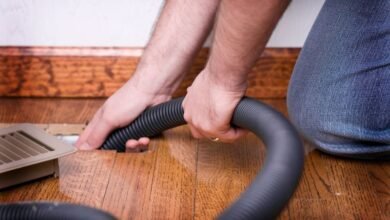Water Filtration Maintenance: A Comprehensive Guide to Clean and Safe Drinking Water
Water filtration systems are key to removing impurities, particles, and contaminants from our water, making it safe for daily use. However, just like any essential household equipment, water filtration systems require regular maintenance to keep them operating effectively. Regular upkeep not only ensures the quality of water but also prolongs the life of the filtration system, saving money and avoiding potential health risks associated with unclean water. This guide covers everything you need to know about maintaining a water filtration system, including why maintenance matters, how often to perform it, specific steps for different types of filters, and general tips for keeping your system in top shape.
The Importance of Water Filtration Maintenance
Water Filtration Miantenance is very cruicial as these systems are built to remove contaminants such as chlorine, lead, bacteria, and various impurities. Over time, however, filters can become clogged or lose their effectiveness as they collect more particles, leading to reduced water quality, lower flow, and sometimes foul odors or tastes. Without regular maintenance, these issues can escalate, potentially allowing contaminants to seep through the system.
Maintaining your water filtration system ensures consistently high water quality, prevents contaminant buildup, enhances the system’s efficiency, and ultimately extends the equipment’s life. Neglecting maintenance, however, can lead to increased wear and tear, system breakdowns, and replacement costs.
Understanding the Components of Water Filtration Systems
To effectively maintain a filtration system, it’s helpful to understand its main components. Most water filters contain several key parts:
Sediment Filters
These initial filters trap large particles such as sand, dirt, and rust.
Carbon Filters
Used to improve taste and odor, carbon filters remove chlorine, volatile organic compounds (VOCs), and various chemicals.
Reverse Osmosis (RO) Membranes
RO membranes handle dissolved solids like salts and minerals, producing cleaner, softer water.
UV Lights
These are sometimes used to eliminate bacteria and viruses, providing an additional layer of safety.
Post-Filters and Mineral Filters
Post-filters provide final polishing for the water, and mineral filters reintroduce beneficial minerals for enhanced taste. Each of these components has its own maintenance needs, so understanding how each one works will help ensure thorough and proper maintenance.
Step-by-Step Water Filtration Maintenance Guide
Change Filters Regularly
Changing filters is a fundamental part of maintenance. Each type of filter has a different lifespan, so it’s important to keep track of when each should be replaced. Sediment and carbon filters typically need replacement every 6–12 months, while RO membranes last around 2–3 years. UV lights generally last about 12 months before they lose effectiveness.
Clean the Filter Housing
The housing, or casing, that holds filter cartridges can gather dirt, mold, or other contaminants, especially in humid environments. To clean it, first turn off the water supply and unscrew the housing with the special wrench provided. Remove the old filter and wash the housing with warm, soapy water. Rinse thoroughly to ensure no residue remains, then replace the filter with a new one before reassembling. This helps prevent contaminants from getting back into the water supply and keeps the system hygienic. Ideally, you should clean the housing each time you replace the filter.
Inspect Seals and O-rings
O-rings and seals are essential for creating a tight, leak-free fit within the system. Over time, they can crack, dry out, or lose flexibility, leading to leaks or even contamination. Each time you change the filter, inspect the O-rings and seals for any signs of wear or damage. Applying a food-safe silicone lubricant can keep them supple, extending their lifespan. Replace any worn or damaged seals to maintain system integrity and prevent leaks.
Flush the System Regularly
Flushing the system clears out any loose particles, residual chemicals, or impurities that may have accumulated over time. Running water through the system for a few minutes after changing filters or when flow seems sluggish will help prevent blockages and maintain optimal flow rates. For RO systems, flushing the membrane every few months can prevent buildup and prolong the membrane’s effectiveness.
Monitor Water Pressure and Flow Rate
Water pressure is a crucial indicator of a filtration system’s health. If water flow becomes noticeably slower, it could be a sign of clogged filters or blockages within the system. Replacing clogged filters is the first step to resolve this. If the issue persists, check for visible blockages in the water lines, or consider consulting a professional to ensure there are no plumbing issues affecting the system’s performance.
Sanitize the System Annually
Bacteria, mold, and algae can sometimes grow in filtration systems, especially if they’re in humid areas or are used infrequently. Annual sanitization can eliminate these contaminants, keeping the water safe. To sanitize the system, turn off the water supply and remove all filters. Use a food-grade sanitizing solution (as per the manufacturer’s instructions), filling the system housing and letting it sit for 30–60 minutes before rinsing thoroughly. Sanitization is an extra layer of cleanliness that will help ensure bacteria and mold do not contaminate the water.
Schedule an Annual Professional Check-Up
Although most maintenance can be done yourself, it’s also beneficial to schedule a professional inspection at least once a year. Professionals can identify potential issues that might go unnoticed, such as invisible leaks, internal buildup, or wear on RO membranes. An annual inspection provides peace of mind and keeps the system in top condition.
Maintenance Needs for Different Types of Water Filtration Systems
Maintenance varies slightly depending on the type of water filtration system. Countertop and pitcher filters are relatively easy to maintain, requiring filter changes every 2–3 months. Under-sink systems, which filter water at the point of use, need more frequent checks on filters, hoses, and connections, generally every 6–12 months. Whole-house systems often contain multiple stages of filtration, so it’s essential to follow the recommended replacement schedule for each stage. For reverse osmosis systems, which have several layers of filtration, regular flushing, sanitization, and RO membrane care are crucial.
Signs That Your Water Filtration System Needs Maintenance
While following a regular maintenance schedule is key, some telltale signs indicate your filtration system may need immediate attention. These include:
Reduced Water Pressure
If water flow slows significantly, it’s often due to a clogged filter.
Unpleasant Taste or Odor
A change in taste or smell usually signals a filter that’s no longer working effectively.
Cloudy Water
Hazy or cloudy water can indicate sediment or particles are bypassing the filtration system.
Unusual Sounds
Strange noises, like gurgling or bubbling, may be a sign of trapped air or blockages in the system. Addressing these issues as they arise can prevent further damage to the filtration system and maintain water quality.
Conclusion
Water filtration systems offer peace of mind by providing clean, safe drinking water. But to keep them working efficiently, regular maintenance is essential. By adhering to the guidelines here—changing filters on time, cleaning the housing, inspecting seals, flushing the system, sanitizing annually, and scheduling professional check-ups you can help ensure your system delivers high-quality water consistently. To stay organized, set reminders in your calendar for filter replacements and cleaning tasks, or keep a maintenance log for your system. Consistent maintenance not only protects your family’s health by providing safe water but also extends the lifespan of the filtration system, maximizing its value and effectiveness over time.
4o




